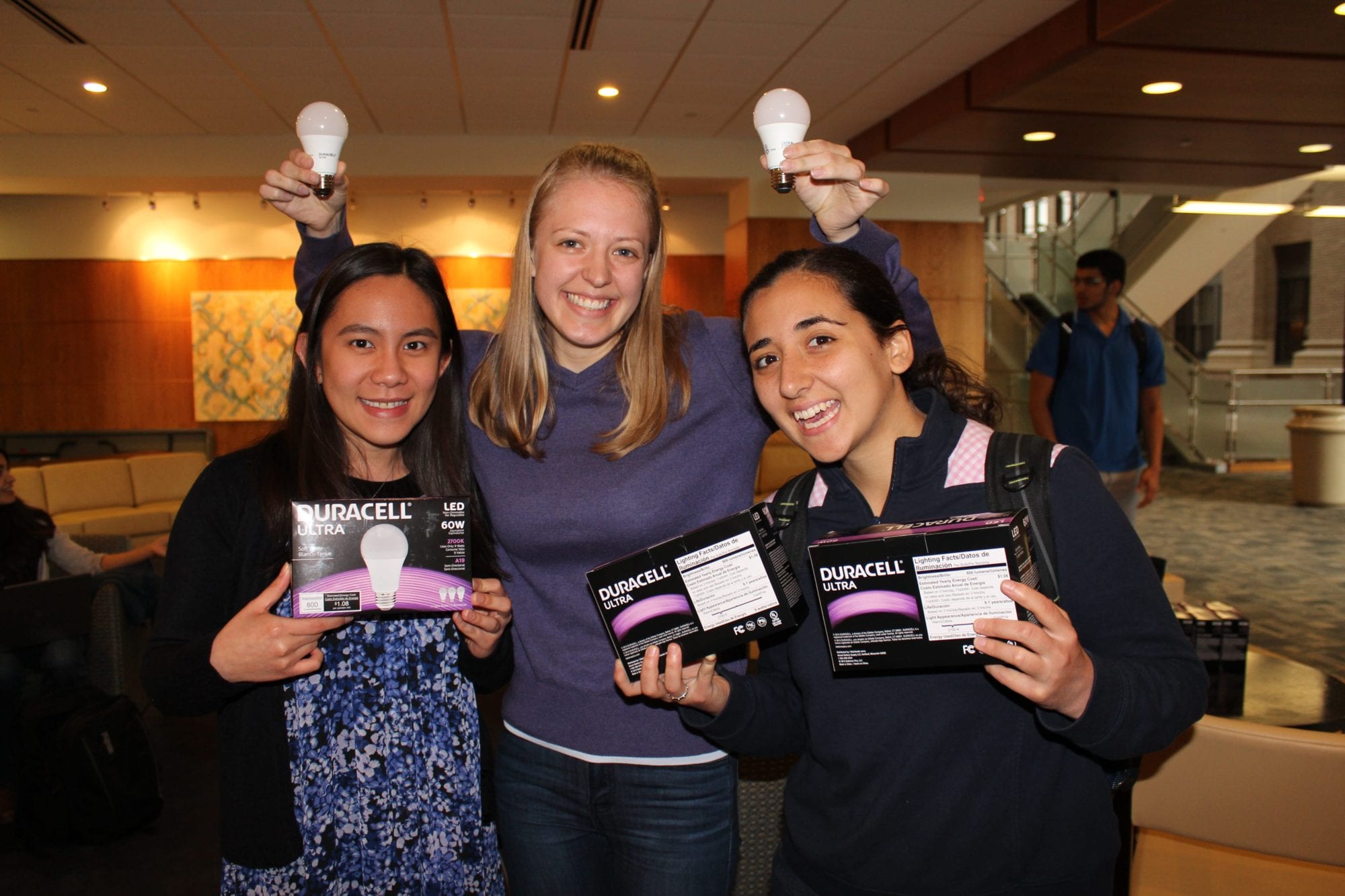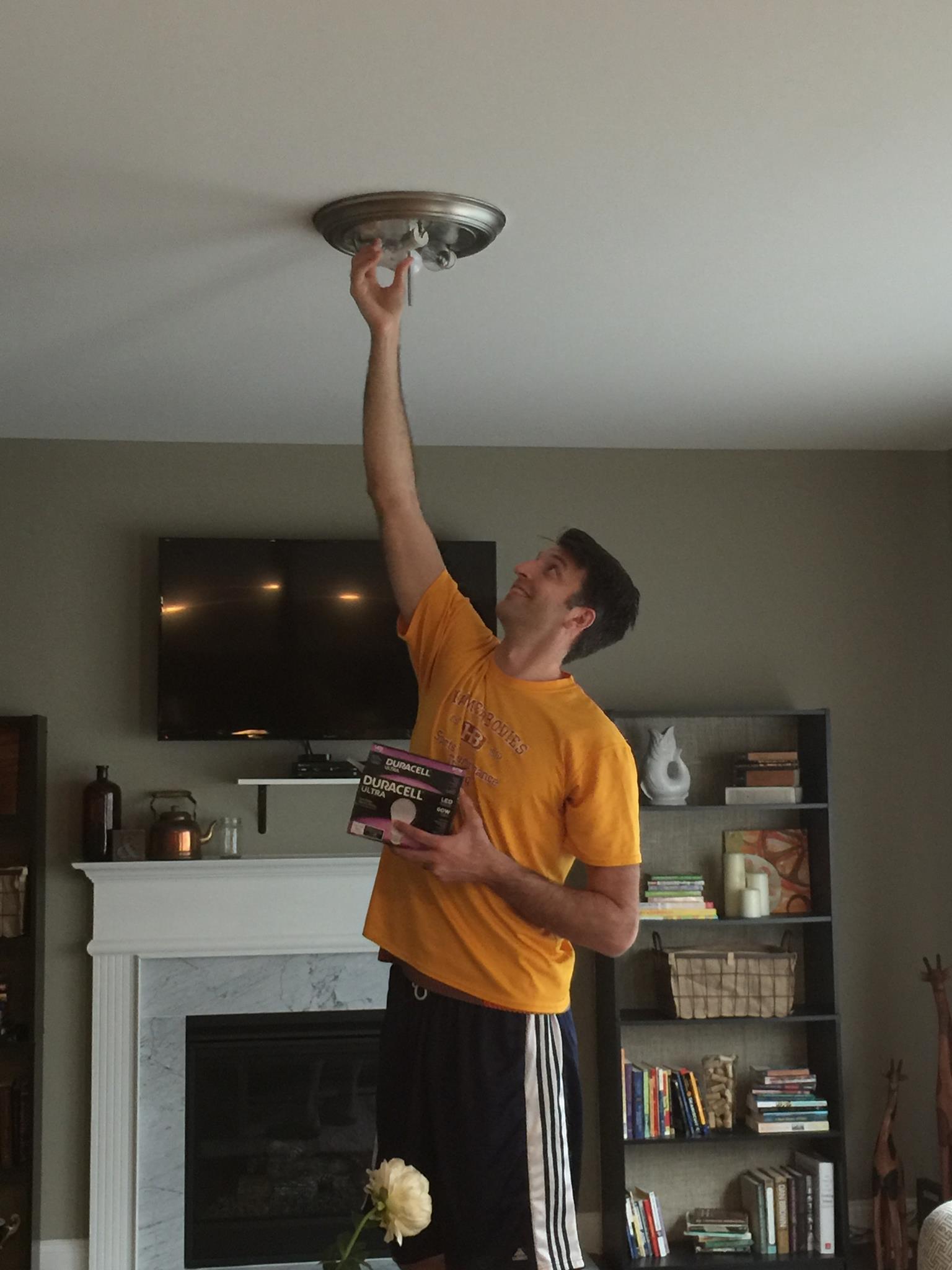During the spring 2016 semester, utilizing support from the Student Sustainability Fund, the WUSM Student Sustainability Committee distributed nearly 1,000 LED light bulbs to medical students. This project engaged future physicians in sustainability by encouraging this easy first step: changing out light bulbs.
This initiative had two main goals: (i) generate tangible action on energy reduction, and (ii) promote a more educated and environmentally-aware student body that will lead to lasting change.
 Students were asked to submit a basic profile of their residence status and were subsequently given a matching amount of LED light bulbs through a distribution event. A follow-up survey confirmed that students used the bulbs to retro-fit their homes, apartments, or dorms. The overall cost analysis for a complete retrofit of all 1,000 light bulbs displayed a savings of over $15,000 for just the first year while reducing carbon emissions by 126.5 tons. In addition to engaging students, this project also served as a stepping stone for future projects by fostering a passion for sustainability in the medical student body. Nearly half of the School of Medicine student body participated in this program.
Students were asked to submit a basic profile of their residence status and were subsequently given a matching amount of LED light bulbs through a distribution event. A follow-up survey confirmed that students used the bulbs to retro-fit their homes, apartments, or dorms. The overall cost analysis for a complete retrofit of all 1,000 light bulbs displayed a savings of over $15,000 for just the first year while reducing carbon emissions by 126.5 tons. In addition to engaging students, this project also served as a stepping stone for future projects by fostering a passion for sustainability in the medical student body. Nearly half of the School of Medicine student body participated in this program.
The connection between saving energy and public health is strong. In Missouri, seventy eighty percent of our electricity comes from coal-fired power generation (2015). Coal is the most carbon-intense fuel source; carbon dioxide is the most emitted greenhouse gas in the United States.
Reducing carbon pollution through saving energy and shifting to renewable energy will save lives, significantly improve public health and reduce healthcare costs. Unhealthy air caused by climate change, driven by rising carbon pollution, leads to more childhood asthma attacks and increases complications for those with lung disease and other chronic conditions such as heart disease or diabetes. Many scientific studies have shown strong associations between pollution from fossil fuel-fired power plants and poor health outcomes.
Air pollution such as particulate matter, nitrogen oxide, sulfur dioxide, and ozone have all been associated with worsening lung problems such as asthma and cardiovascular disease among individuals. Asthma and heart disease are leading causes of death and disability among people and both contribute greatly to rising healthcare costs.
 According to the American Lung Association, asthma sickened about 20 million adults and more than 7 million children in the United States in 2013. Healthcare for these and other related health complications and increased deaths costs millions of dollars each year. In 2011, Missouri had over 7,700 hospital admissions for asthma alone, with an average cost of over $14,300 per stay. The increased carbon dioxide emissions associated with climate change also worsen smog and cause plants to produce more pollen pollution, increasing respiratory threats, particularly for people with allergies and asthma.
According to the American Lung Association, asthma sickened about 20 million adults and more than 7 million children in the United States in 2013. Healthcare for these and other related health complications and increased deaths costs millions of dollars each year. In 2011, Missouri had over 7,700 hospital admissions for asthma alone, with an average cost of over $14,300 per stay. The increased carbon dioxide emissions associated with climate change also worsen smog and cause plants to produce more pollen pollution, increasing respiratory threats, particularly for people with allergies and asthma.
In a recent statement in support of the EPA’s carbon pollution standards, Harold Wimmer, National President and CEO of the American Lung Association, said, “Power plant pollution makes people sick and cuts lives short. We are pleased to see significant health benefits from the EPA’s proposed limits on carbon pollution from power plants, which would reduce the burden of air pollution in America, prevent up to 4,000 premature deaths and 100,000 asthma attacks in the first year they are in place, and prevent up to 6,600 premature deaths and 150,000 asthma attacks in 2030.”
Mr. Wimmer’s statement and the supporting statistics above illustrate the significant public health impact of saving energy and cleaning up our air. WUSM students who participated in this project took a small but meaningful step to increase health in Missouri while decreasing wasted energy!
Special thanks to David Ebertz, MD Candidate of the School of Medicine, for his authorship of an extensive report and overall leadership of the Light Up WUSM project.